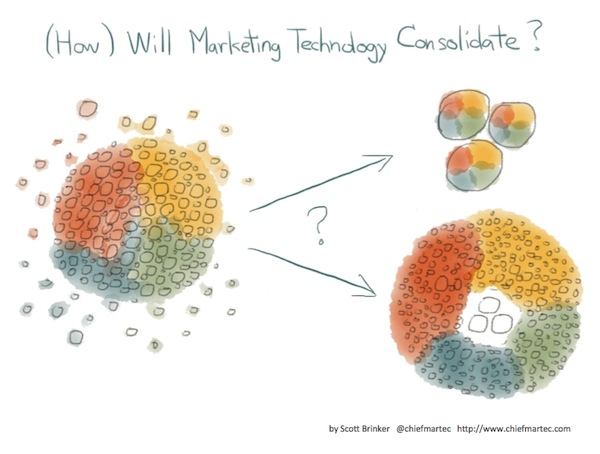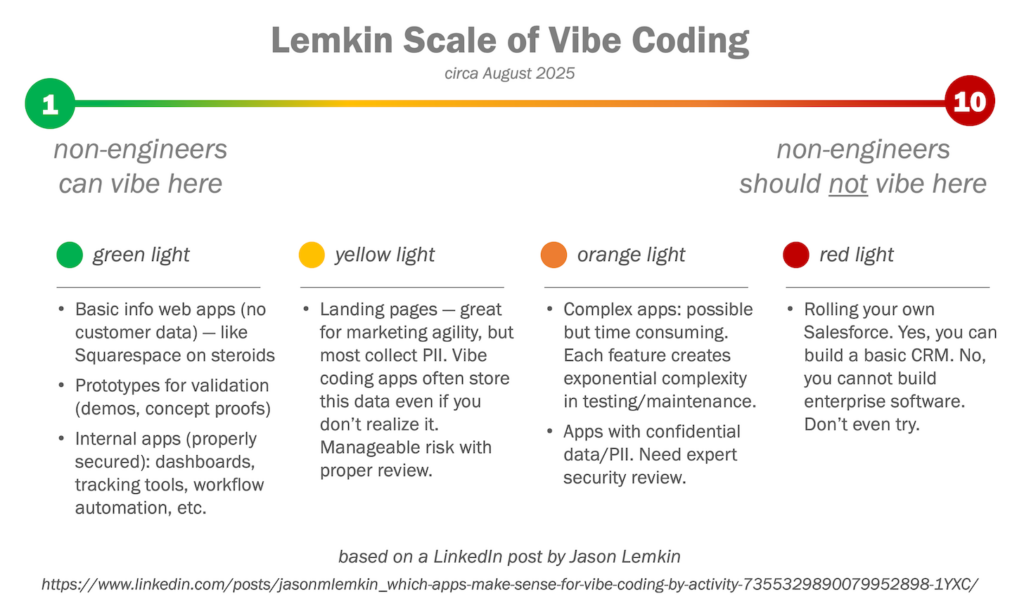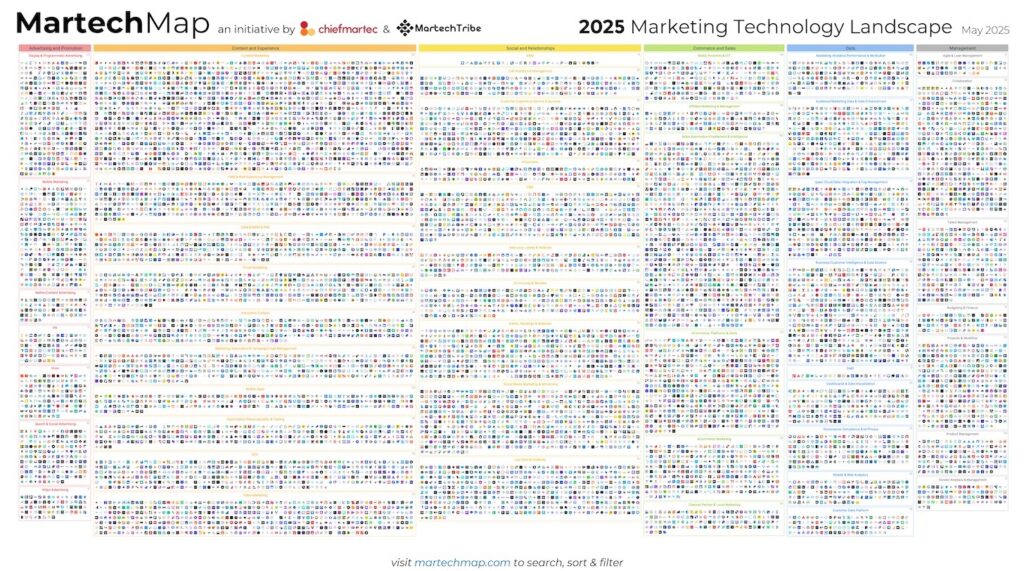My post from last week — is marketing technology consolidating or diversifying — resonated with the folks at HubSpot, and they invited me to contribute a few thoughts on that subject to their blog.
The result: Will Marketing Technology Look Like iOS Someday?
As illustrated in the graphic above, we consider three possible futures for marketing technology:
- Diversified with no real center of gravity (kind of what we have today), on the left.
- Consolidated into a handful of all-in-one marketing suites, in the upper right.
- A few consolidated platforms with highly diversified ecosystems of specialized apps, in the lower right.
I call the second one the “ERP vision” of marketing technology consolidation, while the third is the “iOS vision” as an alternative. Here’s an excerpt from my the post on the HubSpot blog:
Can we have the best of both worlds, consolidation and diversification?
Indeed, that may be the answer. Consider an alternative “iOS vision” of marketing consolidation, where a small number of platforms emerge as the “backbones” of marketing operations. The analogy is inspired by Apple’s iOS and Google’s Android platforms — two contenders that have unquestionably consolidated mobile operating systems, while simultaneously fueling an explosion of diversified apps built on their foundations. Apple just recently announced the availability of over 700,000 such apps. It doesn’t get more diversified than that.
Of course, most marketing technologies are far more complex than consumer smartphone apps. Don’t take this metaphor literally. But conceptually, the same architecture could exist. Imagine a handful of marketing platforms that standardize certain events, workflows, and data structures at the core of marketing operations. By exposing a rich and expressive API, other marketing software products could easily interface to that backbone, using it to seamlessly feed in and out of a company’s overall marketing technology ecosystem.
Companies could have the benefits of a consolidated infrastructure, sparing themselves expensive custom integration work at every turn, while simultaneously leveraging a plethora of specialized marketing applications that combine to give them a unique set of superpowers tailored to their distinct brand vision of the ultimate customer experience.
Sound far-fetched? Well, take a look at Salesforce.com’s AppExchange. Or the business software synchronization service Zapier. Or, more relevant to readers of this blog, HubSpot’s App Marketplace. The parallels to Apple’s app store don’t seem so far off in comparison.
Click to read the full post.




Great post. I like the Salesforce model and hope that marketing automation goes the same way.
I want a strong vendor with a clear vision and great tech to establish an ecosystem — but I want the innovation of lots of developers working to extend the platform.
This and the prior post on marketing technology consolidation/diversification are great. Very informative as to some of the strategic plays that are going on. Just in the last 6 months, I’ve run into several very compelling “meta” technology plays (i.e., platforms). Lexity and Adstaq are two. There’s a third that I can’t name…they’re in stealth (mwuh hah hah hah). So I’ve got to think that Scenario #3 is what’s happening now. But longer term, every industry and cycle of innovation eventually enters a mature phase where companies consolidate. I don’t see marketing technology being any different. Also, more good reading on ad tech consolidation here: http://www.adexchanger.com/data-driven-thinking/the-myth-of-the-end-to-end-ad-tech-solution/ (the writer’s POV also fits with Scenario #3, with platforms bringing together best-of-breed solutions).
Interesting post. I think we can automatically eliminate option one. As time passes the way we approach marketing technology will change to bring better results. Business people need solutions that are relevant to their goals, easy to use and affordable.
Innovation is always good, once it matches the needs that people really have. If a particular developer sees that another company has solutions that augment or complement their own offerings, they will probably acquire that technology. They might restrict access to their platform from other software products, or they might not. It depends on what would make them more competitive.